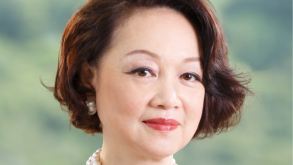
Get ready for 2020
Speakers said that for standard essential patent (SEP) holders and other stakeholders concerned with the concept of fair, reasonable and non-discriminatory (FRAND) terms, understanding the diverging case law and practices across Europe was more important than ever.
While the Court of Justice of the EU set out the rules of negotiations in Huawei v ZTE, nuances such as the burden of proof regarding FRAND conformity can vary hugely between jurisdictions. In Germany, for example, it was decided in Tagivan v Huawei that the burden falls on SEP holders. In Philips v Wiko in the Netherlands, however, the opposite was found to be the case.
Delegates were also warned to keep an eye out for changes to German patent law that could come as a result of mounting lobbying from the automotive and telecoms industries to change automatic injunction law. One speaker noted, however, that most of what lobbyists are asking for is already achievable under the current system.
Navigating litigation
Litigants should have a clear idea of what they want to achieve, speakers said; whether that be an injunction, monetary damages, a licence or the revocation of a patent. If a business cannot achieve what it wants in a particular jurisdiction, it may want to think twice before it litigates there.
And litigants should conduct a cost-benefit analysis to make sure their litigation plans are financially sound. “There are two things that make a court attractive from my perspective: cost and speed,” said one speaker. “But you also need to look at the entity you’re looking at, because depending on who they are and where you are, winning could be as bad as losing. If a defendant refuses to accept an injunction and simply moves to another market, what was the point?”
Delegates were also told to stay abreast of changes to China’s Patent Law. One speaker pointed out that the fourth amendment is raising the threshold of achievable damages in patent claims and easing the burden of proof on plaintiffs, making China a much more attractive place to litigate in.
Building and managing a strong department
One speaker noted that they had enjoyed huge success in building processes to regularly analyse their portfolios and determine patent worth. The aim was to decide whether some patents were worth keeping and ultimately shed the ones that were not, to save funds that could be reinvested in the department.
Diversity and inclusion also emerged as an important talking point for speakers, who said it was becoming increasingly vital to get a broader range of backgrounds and experience levels to contribute to projects.
The AIs have it
One speaker joked that he had recently overheard a conversation where someone said: “By 2050 all attorneys will have been replaced by AI – and judges too.” He was sceptical about that outcome, but noted that technology would do a lot of the mundane processes that IP attorneys have to do now by that time.
Using these technologies was one thing, speakers noted, but developing and patenting them was another. Section 101 of the US Code and Article 52 of the European Patent Convention were said to be big barriers to the patenting of computer-implemented inventions.
A speaker noted that these hurdles were particularly difficult to overcome for internet-of-things (IoT)-enabled products. He said that to demonstrate inventive step, it would not be enough to show use of a known internet technology in a different domain. The connected object must have a problem that has been solved.
He said that it is also important to teach attorneys the difference between solving a problem and circumventing it – because there is a fine line between the two.
For example, in the case of claims directed to a technical implementation of a non-technical method or scheme – in particular of a business method or set of game rules – a modification to the underlying non-technical method or scheme aimed at circumventing a technical problem is not considered to make a technical contribution over the prior art.
When choosing the right prior art for IoT inventions, attorneys should choose the closest prior art in normal situations, he added. The closest prior art should be able to disclose, in a single reference, the combination of features that constitutes the most promising starting point for a development leading to the invention.











